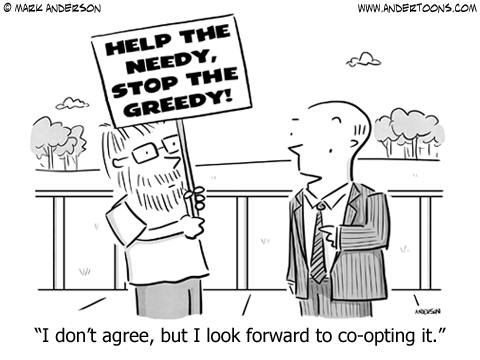 Taxable vs Tax-deferred Calculator
Taxable vs Tax-deferred Calculator

If you’re a particularly savvy investor, you’ve no doubt earned your fair share of money as a result of your financial acumen. Of course, you’ve probably dealt with your fair share of taxes, too. This calculator will help you compute and compare the future value and annualized yield of both taxable and tax-deferred investments.
First enter the dollar amount of the investment. Follow this with the expected annual rate of return, number of years invested, marginal tax rate, and the percentage of growth that is taxable. Click on CALCULATE and you’ll see the dollar difference between taxable and tax-deferred investments, as well as the difference between annualized yields.
Investment Returns: The Impact of Taxes and Tax Deferral

Tax deferral on investment returns can be a very valuable investment strategy, especially for those looking to invest over a long period of time (several decades) or are planning for retirement. However, the landscape of taxes and tax deferral on capital gains can be complicated, and many factors come into play when deciding what kind of portfolio is right for you.
Understanding Investment Returns and Tax Deferral
Investment returns are what make the risk of investing worthwhile for most people. The potential to invest money and come away with more than what you put in is enticing and oftentimes a very valuable financial decision. However, when you invest money and come away with investment returns and capital gains (which is, essentially, the money you make when you invest), you have to pay taxes on those gains. Long-term capital gains in the United States (which come from an investment of more than one year) are taxed at a lower rate than income tax.
In simplest terms, tax deferral is delaying paying taxes on an investment, usually for a specific period of time. The most common type of tax-deferred account is a retirement account, usually a 401(k). Delaying paying taxes means that the tax you would have paid on interest remains in your account to accumulate more interest. Ultimately, even if the tax rate is the same at the end of the investment, your return on investment should be larger at the end of a tax-deferred investment.
Tax deferral, while it has several benefits, also has some drawbacks. For one, investors have to pay a penalty if they withdraw from those accounts early. For another, if the capital gains are significant enough, they may land an investor in the highest tax bracket. Since tax-deferred accounts are subject to income tax, that might end up over 10 percent more than the 28 percent tax rate on yearly taxed capital gains.
Inflation Hurts Investment Returns
Another reason investors may choose a tax-deferred investment is inflation. Over the course of an investment, especially a long-term investment that spans decades, inflation accounts for a considerable amount of depreciation in value. Though the dollar amount of the investment may be going up, if it goes up more slowly than the rate of inflation, the investor actually ends up with less wealth, comparatively, than he or she started with.
Since deferring taxes on an investment leaves more money in a portfolio to grow, that higher rate of return is more likely to gain an actual profit for the investor, even accounting for inflation.
Low Turnover Cuts into Tax Deferral Benefits
Turnover accounts for how much buying and selling happens in a stock portfolio. The higher a portfolio's turnover, the more taxes and fees it will accumulate. Any amount of turnover costs the investor in brokerage fees, trading costs, and taxes, each taking a percentage of the amount of money the investment makes. High turnover portfolios can yield impressive returns.
Tax deferral, however, doesn't work well with portfolios that have high turnover percentages. Because of the other costs an investor has to pay on investments with turnover of even 20 percent, most of the money gained with tax deferral ends up cancelled out by the fees paid. In investments with low turnover, there is still a modest benefit to a strategy involving tax deferral, but every increase in turnover reduces those monetary benefits.
Dividends are Taxed
Dividends are one aspect of your investment that makes tax deferral less worthwhile. Though dividends are paid with a company's after-tax profit and investors often get a lower tax rate on them, they are not tax-free. Because investors have to pay taxes on dividends regardless of whether or not an investment is tax-deferred, that dividend tax reduces the overall monetary benefit of deferring taxes.
Combining dividends with even a modest turnover rate will decrease the benefit of tax deferral even further. If the dividends and low turnover are cutting into potential returns, sometimes the amount of extra wealth the tax deferral provides is actually less than how much the investor would make by investing somewhere else with a higher return, even with taxes and fees accounted for.
No Turnover is Best for Tax Deferral

Large hedge fund managers like George Soros have accumulated billions of Dollars through tax deferral. United States politicians routinely promise to end the carried interest tax break, while never actually delivering on the promise.
Promising, and then failing, to repeal the carried interest tax break is fast becoming a Democratic tradition, so much so that I'm beginning to wonder if not fixing this problem is an intentional move, designed to ensure that Democrats always have something to run on in election seasons." — Matt Taibbi
Tax deferral is the most beneficial in investments with 0 percent turnover and minimal or no dividends. If the money is left alone to grow for decades without being taxed annually, that extra amount of money significantly aids the growth of the entire portfolio. At the end of the period of investment and even after paying a lump sum of taxes, this tax deferral investment strategy results in a higher rate of return than the investor would have seen if taxes had been paid annually. Unfortunately, most investors won't end up with investments that have no turnover whatsoever over a 30-year period.
Time Period is Key
Investors looking to save for retirement, say over a 30-year period of investment, do better with stocks in tax-deferred accounts because of the amount of time the investment has to accumulate money. Those in high tax brackets who have investment goals spanning 10 years or less, however, should probably stick to taxable accounts. The gain of a tax deferral increases with the amount of time that goes by, so anything less than ten years is unlikely to accumulate the amount of returns that would make deferring taxes beneficial.
Theory Versus Practice
Explanation and theory are wonderful for helping investors understand what is happening with their money. However, these scenarios cannot predict what happens in the market or how investments will fare. Imagining these investment opportunities does not account for changes in returns from quarter to quarter of some of these investments.
A broker or an accountant can help investors understand the market and their taxes much more thoroughly than most people can do on their own. Ultimately, each investment is a unique scenario, the outcome of which cannot be predicted by even the most thorough planning and equations. The best thing investors can do is monitor their portfolios and be knowledgeable about the market. Invest smartly and be willing to change strategies should something unforeseen crop up. With good planning, the right investment for your future is out there waiting.
Change privacy settings
